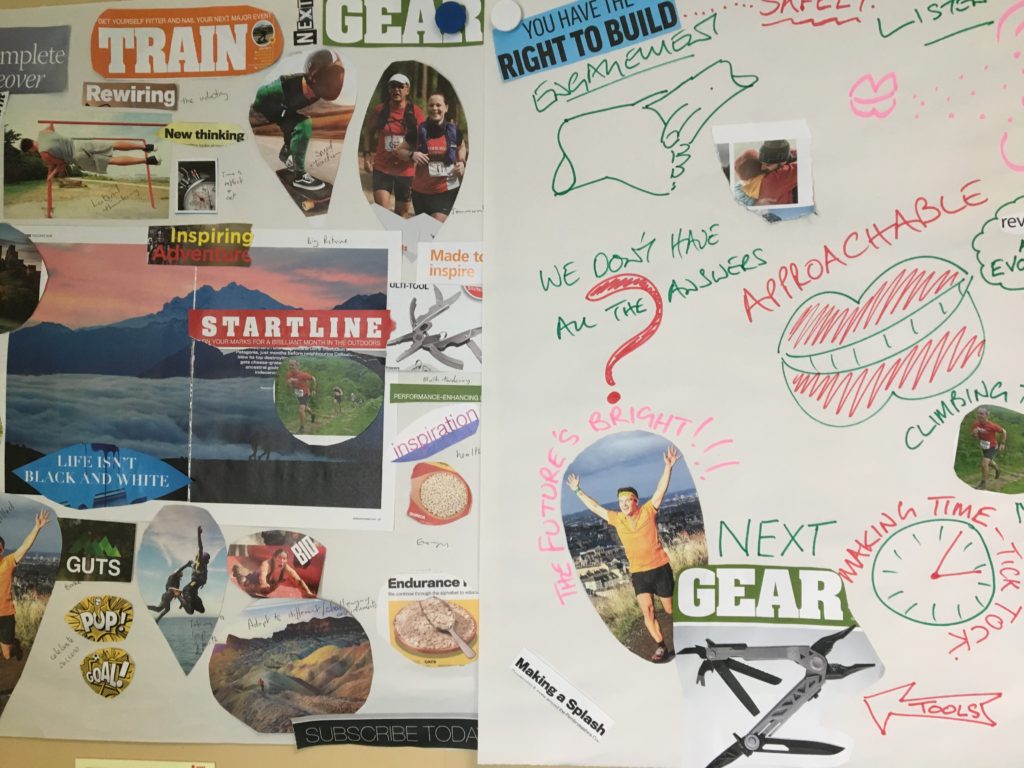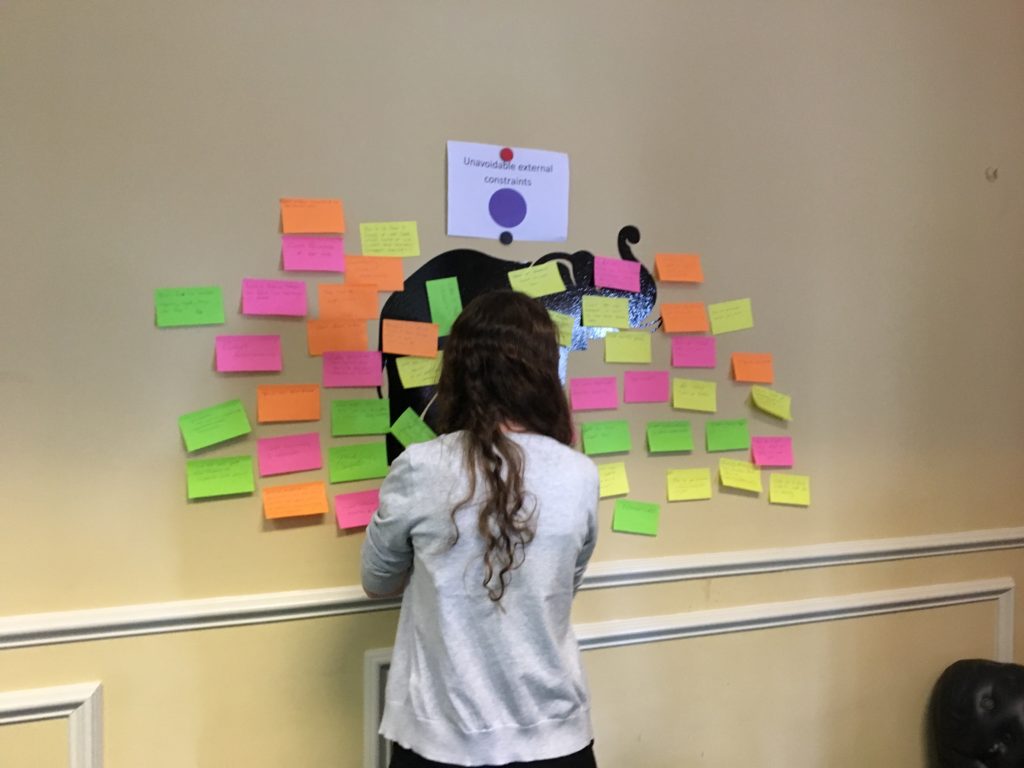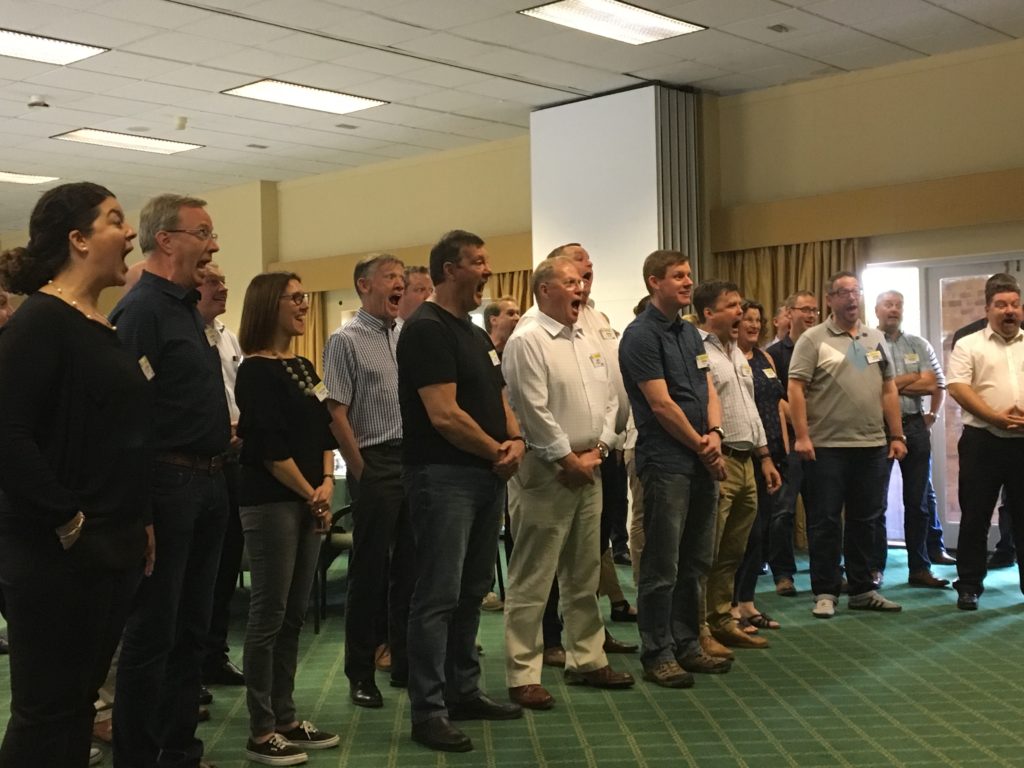 Heather Beach from training firm, the Healthy Work Company, talks about her experience of moving forward Laing O’Rourke’s Safety Differently (SD) programme.
Heather Beach from training firm, the Healthy Work Company, talks about her experience of moving forward Laing O’Rourke’s Safety Differently (SD) programme.
Assisted by Acre Framework’s Anna Keen, who first introduced me to John Green, I have just returned from facilitating a two-day offsite meeting for 64 of the HSE team at Laing O’Rourke (LoR), to move Next Gear – their implementation of SD– up a gear.
It felt like an enormous privilege. There is the privilege of getting to know a business and its people (which you feel with any training project). Then there is the fact the SD implementation at LoR is being watched intently by both fans and critics, and to be able to have a small insight from inside the camp of a team working with fascinating concept. For a geek committed to transforming health and safety, what better way of spending two days?!
Safety is broken
The SD concepts were introduced to LoR Europe about 18 months or so ago (although LoR have been working with this approach for 4 years in Australia, where Green developed the practices along with a handful of others). This introduction took place pretty much at the same time as Green was being interviewed, saying “Safety is broken…and here is what I am going to do about it”. The team worked for the previous 10 years with a Mission Zero strategy which is being gradually replaced with the new, people-centred approach.
LoR attracts people who stay. So, this is a big shift for many. Daniel Hummerdahl from Art of Work has facilitated several workshops for the team, as has John Green; Helen Rawlinson previously at LoR has now joined Art of Work as their MD for Europe. Keith Prince and Andy Sneddon both left senior positions with other organisations to help drive the implementation.
People are the solution not the problem

This for me is the most interesting of SD’s three principles. It speaks to the fact that people rarely behave in an unsafe manner on purpose. That people are adaptable and will find the best way to work with what you give them. The Health and Safety professional doing Safety Differently will be curious – they will want to understand why you do a job in a certain way and discuss with you why it works that way.
My favourite story which works as an illustration comes from Richard Byrne, a senior manager at LoR who talks about when he spotted a dump-truck doing 30 miles an hour in a 20 mile an hour zone onsite. On spotting him later, the driver looks sheepish and awaits a dressing down. Richard’s reaction is to ask him if 20 mph is actually the right speed limit or should it be 30?
Whether you agree with his reaction or not, you can’t deny that there has been a sense in health and safety that we need to control people. If only they would stop being idiots we would all be OK and there is an argument to say that some rules have been created around the worst types of behaviour. This is probably also, where SD parts company from more traditional approaches to engagement – which there are plenty of great examples of in the UK – in which we look at how we change behaviours more effectively.
Now that I get that – it is actually pretty radical….
So if we apply this to the team at LoR, that people are the solution not the problem, there is an interesting tension between how much is created in terms of programmes and tools at the centre of the organisation and how much individual members of the health and safety team are empowered to do their own thing. The team has all been trained for example in a technique called Appreciative Investigation which looks at how we can ask the best questions in any kind of inquiry. This comes directly from the SD toolkit. Yet there is a sense that directives from the centre should be kept to the minimum and that the way SD gets rolled out is by a series of micro experiments which then get fed back to the centre to be re-distributed.
Elephants in the room
In the spirit of people are the solution, the first day of our offsite was dedicated to getting the elephants in the room out and having teams work on their own solutions. Their solutions needed to take the form of offers or powerful requests (time bound, to an individual who could accept, decline or counter-offer). The second day was devoted to some training in listening skills (key to any health and safety professional but critical for successful implementation of Next Gear) and to enabling the team to create their own compelling case for change in the form of a story, To get them ready for this they had some training which looked at voice and body techniques from drama and – for a moment or two we had a LoR choir….
 We picked 10 individuals in a raffle to share their visions to camera and it was incredibly moving. My mascara was smudged and a heavily pregnant and hormonal Anna, was in tears at the back. Creating their own compelling case for change meant that they reconnected with their passion for the job and how that passion had been held back and curtailed by endless bureaucracy and a compliance-based approach to safety.
We picked 10 individuals in a raffle to share their visions to camera and it was incredibly moving. My mascara was smudged and a heavily pregnant and hormonal Anna, was in tears at the back. Creating their own compelling case for change meant that they reconnected with their passion for the job and how that passion had been held back and curtailed by endless bureaucracy and a compliance-based approach to safety.
The trainers Tony Hall and Paul Jamieson who joined us on Day 2 to assist with the drama coaching, commented on what a lovely group of people the team were and it struck me that I almost take that for granted. That having now trained health and safety teams at ITV, Heathrow Airport, Mount Anvil and Laing O Rourke I have yet to come across the caricature of a health and safety professional which either the media portrays or which to be fair I came across an awful lot of in my early career. Perhaps those people just don’t hire me!
A profession in significant change
I believe that this is a profession in significant change. Whether you dislike the buzzwords and the programmes as some do, whether you feel that Safety Differently is a bridge too far, there is no doubt that we are now talking about how we reduce bureaucracy – not shove another piece in every time there is an incident; we understand that engagement works considerably better than the big stick of compliance (and training in influencing is a big part of my business).
For me, the door we are still struggling to unlock is business ownership of health and safety. We talk about it, but do we really have the confidence to let go? How much easier is it to create a culture of dependence where we are needed and believe we offer value every single day? Yet, as we continue to give business the answers from us the experts, how will that dependence ever be broken?
If you want to know more about how Safety Differently can benefit your business contact Helen Rawlinson at [email protected]
If you are interested in The Healthy Work Company training your health and safety team in engagement or devising a mental health programme in partnership with you for your business, please contact [email protected].
The Safety Conversation Podcast: Listen now!
The Safety Conversation with SHP (previously the Safety and Health Podcast) aims to bring you the latest news, insights and legislation updates in the form of interviews, discussions and panel debates from leading figures within the profession.
Find us on Apple Podcasts, Spotify and Google Podcasts, subscribe and join the conversation today!




